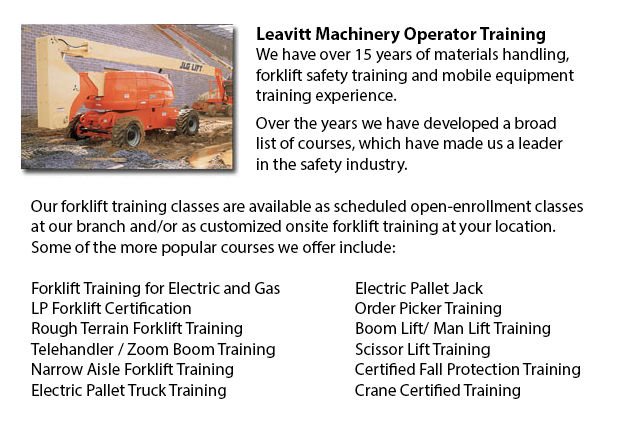
Boom Lift Certification Fort Mcmurray - Utilizing elevated work platforms allow for maintenance operations and work to be performed at elevated work heights that were otherwise unreachable. Boom Lift Certification Training teaches workers about the safe operation of scissor lifts and boom lifts.
Despite the variety in lift style, site conditions and applications, all lifts have the potential for death or serious injury when not safely operated. Falls, electrocution, crushed body parts, and tip-overs can be the tragic outcome of incorrect operating procedures.
To be able to avoid aerial lift incidents, individuals should be qualified to be able to train workers in the operation of the specific kind of aerial lift they will be utilizing. Controls must be easily accessible in or beside the platform of boom lifts made use of for carrying workers. Aerial lifts must never be altered without the express permission of the manufacturer or other recognized entity. If you are renting a lift, make certain that it is correctly maintained. Prior to using, controls and safety devices should be checked to be able to make certain they are working correctly.
It is essential to follow safe operating procedures in order to avoid workplace incidents. Driving an aerial lift while the lift is extended should not be done, nonetheless, some models are designed to be driven when the lift is extended. Always set brakes. Set outriggers, if available. Avoid slopes, but when required make use of wheel chocks on slopes which do not go beyond the slope restrictions of the manufacturer. Follow load and weight limitations of the manufacturer. When standing on the boom lift's platform, make use of a safety belt with a two-foot lanyard tied to the basket or boom or a full-body harness. Fall protection is not required for scissor lifts that have guardrails. Do not sit or climb on guardrails.
This course comprises the following topics: training and certification; safety tips in order to prevent a tip-over; checking the work area and travel path; slopes and surface conditions; other tips for maintaining stability; stability factors; weight capacity; leverage; testing control functions; pre-operational inspection; safe operating practices; mounting a motor vehicle; safe driving procedures; overhead obstacles and power lines; PPE and fall protection; using harnesses and lanyards; and avoid falling from platforms.
When successful, the trained employee will know the following: training and authorization procedures; pre-operational inspection procedures; factors affecting the stability of boom and scissor lifts; how to avoid tip-overs; how to utilize the testing control functions; how to utilize PPE and strategies to avoid falls.
-
Telehandler Training Fort Mcmurray
Telehandler Training Fort Mcmurray - Telehandlers or also called Telescopic handlers are very popular piece of heavy construction equipment most often utilized in agriculture and construction industries. These machines have extreme reaching capabilit... More -
Counterbalance Forklift Training Fort Mcmurray
Counterbalance Forklift Training Fort Mcmurray - Counterbalance Forklift Training courses are always in high demand. The Counterbalance forklift is a forklift that is made along with a weight that counters the balance, evenly spreading the weight of... More -
Heavy Equipment Training School Fort Mcmurray
Heavy Equipment Training School Fort Mcmurray - HEO or the heavy equipment operator courses will provide you with the knowledge and skills required in order to enter the workforce as an entry level heavy machine operator. In this 12 week course in ad... More -
Operator Safety Training, Re-Qualification Training, In-House Instructor Training in Fort McMurray
Used in just about all boat yards, industrial construction sites or warehouse operations, the forklift is a very important component in order to help pick up and transfer supplies. The reach feature of a lift truck could help improve the applications... More -
Heavy Equipment License Fort Mcmurray
Heavy Equipment License Fort Mcmurray - A heavy equipment license can be obtained by finishing a certification and preparation course at a private training school or a vocational school. This license would qualify you to operate various types of heav... More -
Boom Lift License Fort Mcmurray
Boom Lift License Fort Mcmurray - To operate an aerial boom lift, operators must be licensed through training that can be obtained utilizing both practical training and classroom sessions and by obtaining a boom lift license. Instruction must be give... More -
Skid Steer Loader Training in Fort McMurray
A skid-steer loader is actually an engine powered machine that consists of a small and rigid frame. It is outfitted along with lift arms which are used to attach to different labor saving attachments and tools. Normally, skid-steer loaders are four-w... More -
Order Picker Ticket Fort Mcmurray
Order Picker Ticket Fort Mcmurray - Order picker's enables warehouse employees to lift pallets using forks. Likewise called a stock picker, this electrically-powered equipment is like a forklift except that an order picker is likewise utilized to lif... More

Forklift Training Fort McMurray
TOLL FREE: 1-888-254-6157
Fort McMurray, Alberta
forklifttrainingfortmcmurray.com
Email Us
About Us


